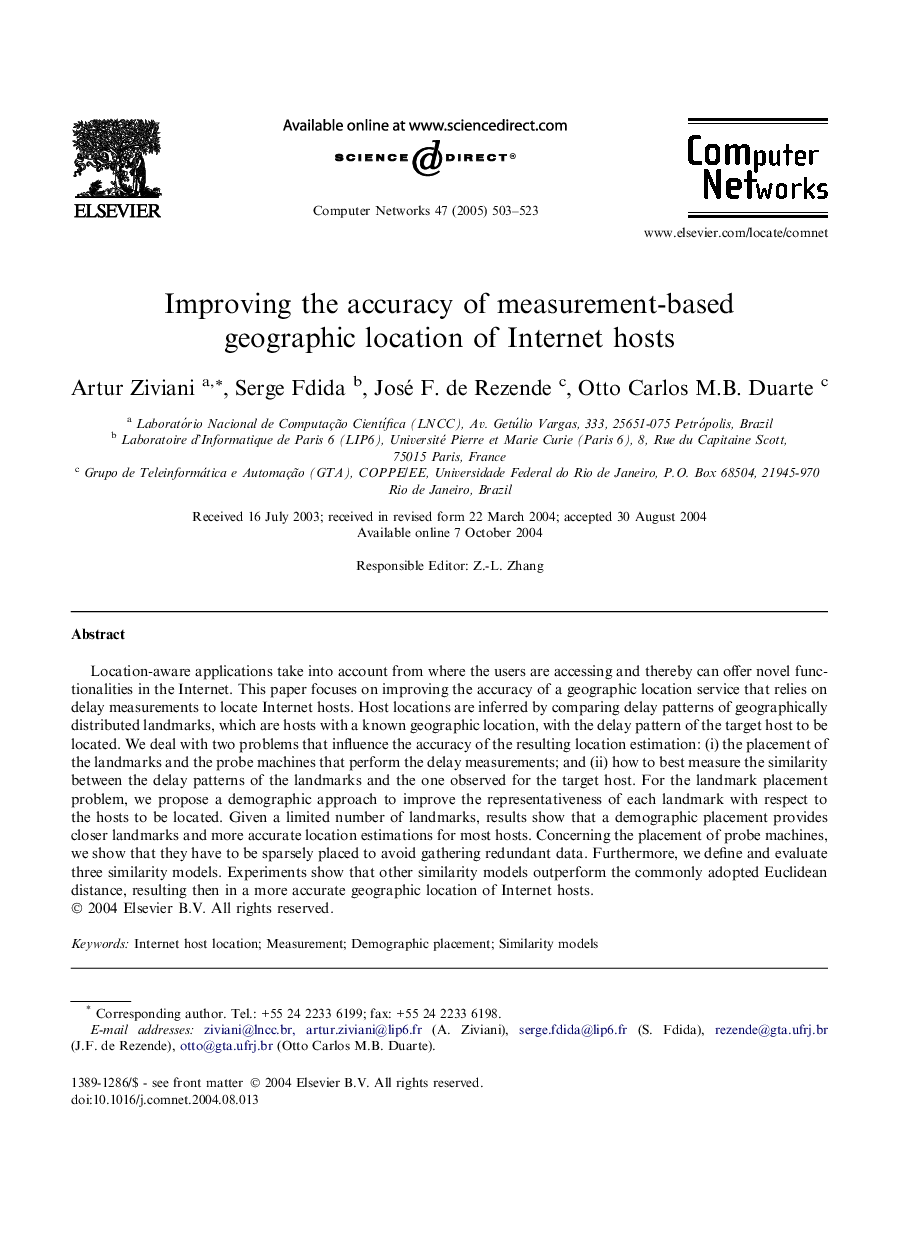| Article ID | Journal | Published Year | Pages | File Type |
|---|---|---|---|---|
| 10339245 | Computer Networks | 2005 | 21 Pages |
Abstract
Location-aware applications take into account from where the users are accessing and thereby can offer novel functionalities in the Internet. This paper focuses on improving the accuracy of a geographic location service that relies on delay measurements to locate Internet hosts. Host locations are inferred by comparing delay patterns of geographically distributed landmarks, which are hosts with a known geographic location, with the delay pattern of the target host to be located. We deal with two problems that influence the accuracy of the resulting location estimation: (i) the placement of the landmarks and the probe machines that perform the delay measurements; and (ii) how to best measure the similarity between the delay patterns of the landmarks and the one observed for the target host. For the landmark placement problem, we propose a demographic approach to improve the representativeness of each landmark with respect to the hosts to be located. Given a limited number of landmarks, results show that a demographic placement provides closer landmarks and more accurate location estimations for most hosts. Concerning the placement of probe machines, we show that they have to be sparsely placed to avoid gathering redundant data. Furthermore, we define and evaluate three similarity models. Experiments show that other similarity models outperform the commonly adopted Euclidean distance, resulting then in a more accurate geographic location of Internet hosts.
Keywords
Related Topics
Physical Sciences and Engineering
Computer Science
Computer Networks and Communications
Authors
Artur Ziviani, Serge Fdida, José F. de Rezende, Otto Carlos M.B. Duarte,
